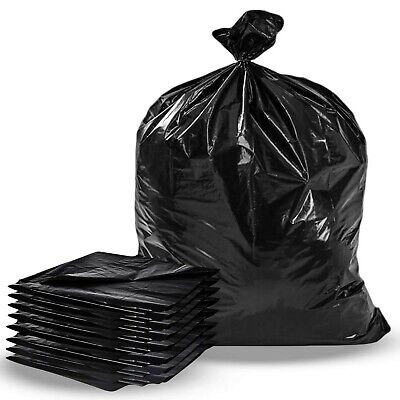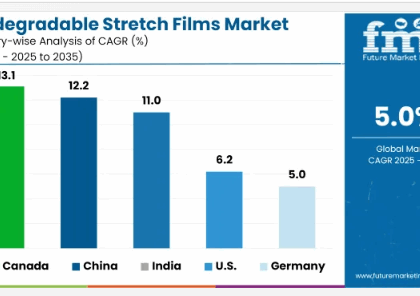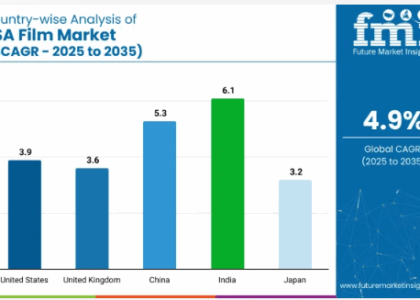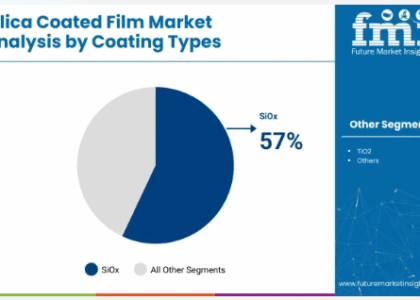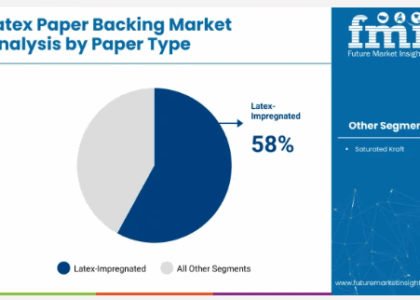The Global Garbage Bag Market value is estimated to total USD 9,681.0 million in 2024. Over the assessment period, global garbage bag sales are projected to expand at 4.2% CAGR, taking the total market valuation to USD 14,602.3 million by 2034.
PE waste bags continue to be in high demand because of their strength and ability to withstand tearing. The predominant materials used to make PE waste bags are LDPE and LLDPE, with HDPE being used for the remainder. By 2034, the target segment is expected to hold a 71.7% market share.
Discover Market Opportunities – Get Your Sample of Our Industry Overview Today!
Several factors are expected to drive the growth of the garbage bag market during the forecast period. These include:
- Increasing number of households
- Rising focus on improving hygiene and sanitation
- Growing demand for convenient and sanitary waste disposal solutions
- Increasing government initiatives and policies for waste management practices
- Surging popularity of compostable garbage bags
Policies and actions by the government are very important for changing how waste is handled. This also has a big effect on the garbage plastic bag industry. As countries across the world face growing problems of trash and environmental protection, several governments have made rules to encourage responsible waste handling.
For instance, making people separate their waste and promoting recycling has created a demand for garbage bags for sorting out garbage quickly. People are becoming more aware of how plastic bags harm the environment, so new ideas for biodegradable and compost alternatives are coming up.
The garbage bag business is changing as companies are concentrating on green ways to match these new rules. New compostable garbage bags are being introduced by manufacturers to address environmental problems. These new solutions are ideal for sustainable waste management practices.
Shifting focus toward biodegradable & bio-based garbage bags is another key factor expected to boost the target market. Similarly, growing sustainable concerns are increasing the popularity of biodegradable garbage bags.
Biodegradable plastics help reduce dependence on fossil fuels during the production of plastic trash bags. Biodegradable plastic trash bags are made from domestic biomass materials, reducing dependence on oil. They are also easier to recycle and can be used more often.
As per the latest analysis, demand for biodegradable plastic garbage bags is expected to grow significantly over the next few years. This is due to increasing consumer pressure and laws such as banning plastic bags and initiatives to address global warming.
Key Takeaways of Global Garbage Bags Market
- The global market for garbage bags is estimated to total USD 14,602.3 million by 2034.
- Based on material, the polyethylene segment is set to hold a dominant market share of 71.7% in 2034.
- In terms of sales channel, the direct sales segment is anticipated to expand at a CAGR of 4.5% during the forecast period.
- By end-use, the household segment is poised to grow at 3.2% CAGR, holding a value share of 21.8% by 2034.
- The United States market value is anticipated to total USD 2,600.9 million by 2034.
- Sales in India will likely rise at 6.8% CAGR between 2024 and 2034.
“The shifting focus toward bio-based garbage bags and increasing government initiatives & policies for waste management are expected to drive growth of the garbage bag industry during the forecast period,” says Ismail Sutaria (Lead Consultant, Packaging and Materials).
Who is Winning?
Below are prominent garbage bag manufacturers listed in the report. The Tier 1 players in the market hold 15% to 20% share.
- The Clorox Company
- Reynolds Consumer Products Inc.
- Poly-America, L.P.
- Berry Global Inc.
- Dagöplast A.S.
- International Plastics, Inc.
- Big Black Sacks
- Novolex Holdings LLC
- Terdex Gmbh
- Plasta Group
- Mcpherson’s Limited.
- Pack-It B.V.
- Top.Z (Hk) Limited
- Meadows
- Novplasta Cz, S.R.O
- Primax D.O.O.
Top players are looking to develop biodegradable and compostable garbage bags from sustainable and eco-friendly materials. They also employ strategies like partnerships, collaborations, facility expansions, distribution agreements, and mergers to boost their sales and expand their footprint.
Recent Developments:
- In May 2022, Berry Global’s UK refuse sack business unveiled a new range of high strength refuse sacks.
Global Garbage Bag Market Segmentation
By Material:
- Polyethylene
- Low Density Polyethylene
- Virgin PE
- Recycled PE
- Linear Low Density Polyethylene
- Virgin PE
- Recycled PE
- High Density Polyethylene
- Virgin PE
- Recycled PE
- Low Density Polyethylene
- PLA
- PHA
- Sugarcane Bagasse
- Compostable Materials
By Capacity:
- Up to 30 Liters
- 30 to 90 Liters
- 90 to 150 Liters
- Above 150 Liters
By Sales Channel:
- Direct Sales (Manufacturers)
- Distributors/Wholesalers
By End-use:
- Service
- Facilities Management
- Catering
- Logistics & Transportation
- Healthcare
- Building & Construction
- Retail
- Hotels & Restaurants
- Civil Government & Defense
- Household
By Region:
- North America
- Latin America
- Europe
- East Asia
- South Asia
- Oceania
- Middle East & Africa
About Future Market Insights (FMI)
Future Market Insights, Inc. (ESOMAR certified, recipient of the Stevie Award, and a member of the Greater New York Chamber of Commerce) offers profound insights into the driving factors that are boosting demand in the market. FMI stands as the leading global provider of market intelligence, advisory services, consulting, and events for the Packaging, Food and Beverage, Consumer Technology, Healthcare, Industrial, and Chemicals markets. With a vast team of over 400 analysts worldwide, FMI provides global, regional, and local expertise on diverse domains and industry trends across more than 110 countries.
Contact Us:
Future Market Insights Inc.
Christiana Corporate, 200 Continental Drive,
Suite 401, Newark, Delaware – 19713, USA
T: +1-347-918-3531
For Sales Enquiries: sales@futuremarketinsights.com
Website: https://www.futuremarketinsights.com
LinkedIn| Twitter| Blogs | YouTube


